5. The Seven-Per-Cent Solution (1976)
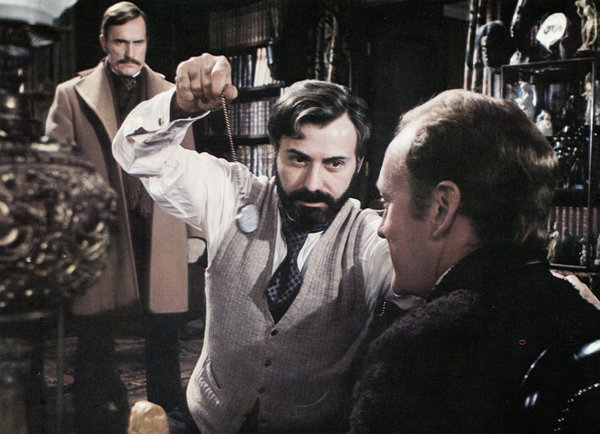
Based on the 1974 novel by Nicholas Meyer, who also wrote the screenplay, Nicol Williamson takes on the role of Holmes, with Robert Duvall as Watson. Here Watson becomes convinced that Sherlock Holmes has become paranoid and delusional, particularly in the belief that Professor Moriarty (Lawrence Olivier) is his arch nemesis and a criminal mastermind.
Attributing this to his cocaine addition, Watson conspires with Mycroft (Charles Gray) to trick Holmes into visiting Vienna and Sigmund Freud (Alan Arkin).Holmes inevitably becomes involved in an equally thrilling case whilst there.
This noteworthy cast makes for an interesting, exiting and original investigation into the psychology of the Sherlock Holmes character. There is a slightly knowing comedic tone at times, comparable with other 1970’s Holmes outings and arguable other popular period pieces of the era such as The Three Musketeers. However, this never veers into bawdy slapstick or mockery of its core character.
With frequent references to published Conan Doyle stories via characters and events throughout, in many ways the film could be viewed as a superlative example of fan-fiction. This is something of a treat for fans, Charles Gray appearing here as Mycroft, several years before he would reprise the role in the TV series starring Jeremy Brett.
Nicol Williamson makes for a suitably empathic Holmes, erratic and vulnerable yet when the situation allows focused and brilliant. In many ways it is Arkin’s Freud who is the main investigator here along with the audience, guided by Watson, enjoying the ride – Homes’ nightmare sequence coming as something of a greatest hits montage.
Curiously, somewhere amid Holmes’ occasional plutonic concerns for Watson, his own moments of emotional doubt, Freud’s athletic tennis match and Watson’s delivery of a swift uppercut and the intellectual sparring between Holmes and Freud there is something, perhaps subconscious, being said here regarding masculinity.
4. Sherlock Holmes and the Spider Woman (1944)
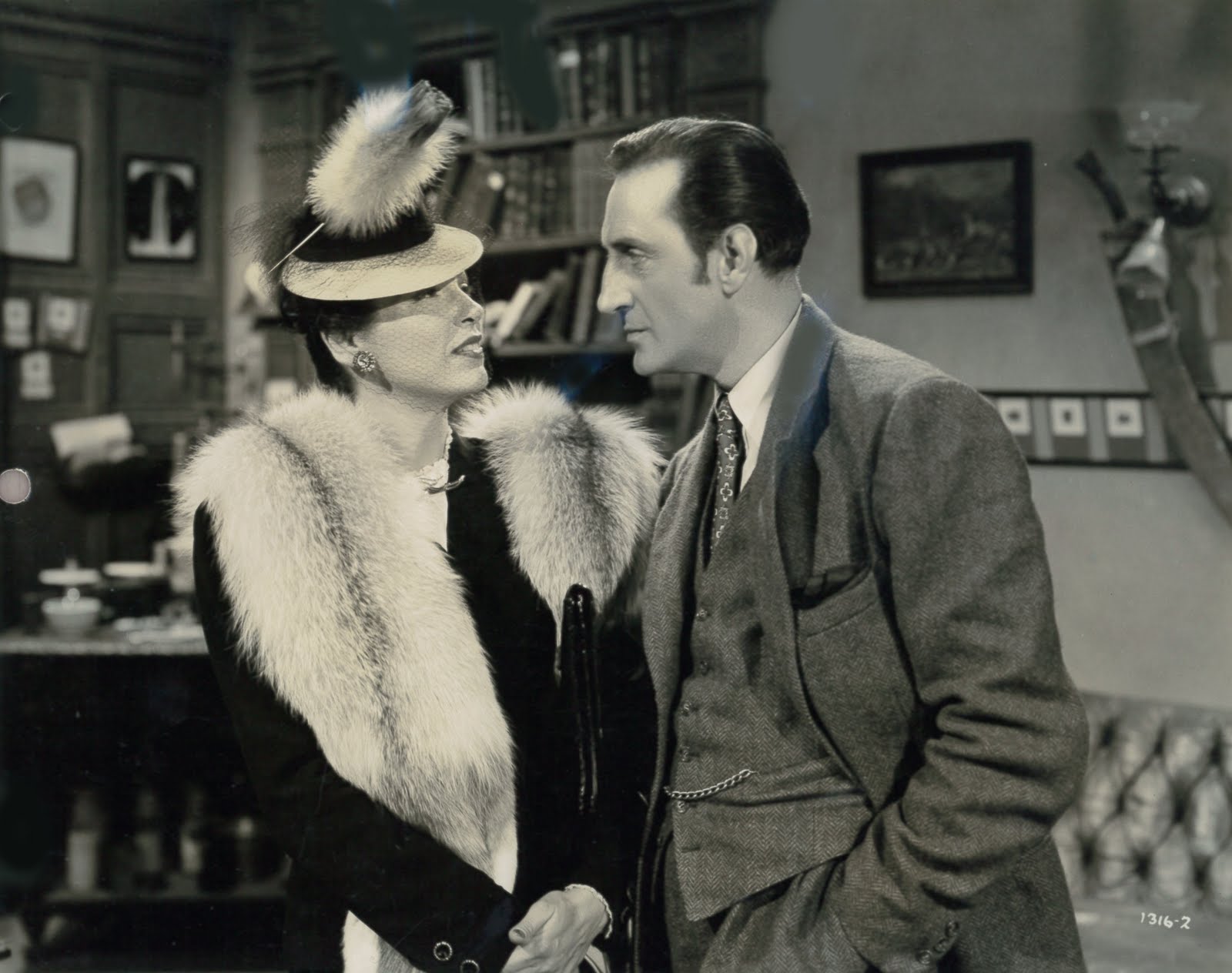
Sometimes known as simply ‘The Spider Woman’, this fifth Universal Studios outing for Holmes and Watson as played by Basil Rathbone and Nigel Bruce makes for a memorable and exiting mishmash of published Holmes stories. It is worth mentioning here that this makes up one of the twelve lower budget B-pictures made by Universal Studios following 20th Century Fox’s loss of the film rights (see 1939’s Hound of the Baskervilles).
Universal chose/budgeted to make the films with a then contemporary 1940’s setting, this also allowed for some degree of unofficial World War Two morale boosting/propaganda as many plots were tweaked to feature Nazi’s as the villains.
In the case of Spider Woman, a story which focuses on Holmes investigating a spate of apparent suicides which are in fact the work of Adera Spedding (Gale Sondergaard) and her accomplices poisoning victims with deadly spider venom to gain insurance money, the combination of several published stories are used to great effect.
Elements of The Final Problem, The Sign of Four, The Empty House, The Speckled Band, The Devil’s Foot, The Yellow Face and the Copper Beeches are all incorporated, making this another hits package for Holmes fans. In filmic terms, this particular Rathbone outing provides strong evidence that the Universal productions are viewable as key examples of film noir.
The ‘December dark shadows’, the creeping threat of crime and villains, while at the heart of the foul deeds (the centre of the ‘web’) a femme fatal with Holmes as the private investigator on the trail. The film was directed by Roy William Neill who began his career in silent film, the Holmes pictures (of which he directed all for Universal) represent his still widest known work today.
Gale Sondergaard would later appear in film for Universal entitled The Spiderwoman Strikes Back, this had no relevance to the Holmes title above but was a likely attempt to cash in on its coat-tails.
3. The Hound of the Baskervilles (1959)
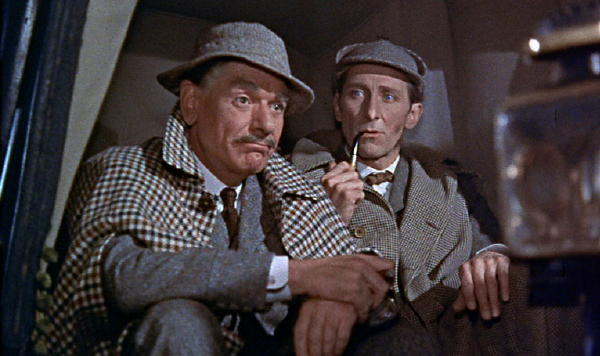
Hammer studio’s adaptation of the Hound of the Baskervilles has been heralded as both one of the best on screen Holmes adventures and best pictures the studio ever produced. This outing also carries the notoriety of having been the first Holmes adventure to be made in colour.
Following on from their pairing in The Curse of Frankenstein and Dracula, Terence Fisher again directs both Peter Cushing (as Holmes) and Sir Christopher Lee (as Sir Henry Baskerville) in this version which, understandably given the studio’s background, takes as Gothic horror slant in terms of style.
Andre Morell, at the time of the film’s release likely better known as Professor Quatermass from the BBC TV series of the same name, takes up the role of Watson. Some augmentations are made to the original story, for example: Sir Henry’s minor heart condition, his attempted murder by tarantula, ritual sacrifice, the painting on the stairs going missing, Stapleton’s webbed hand and his final mauling by the hound.
Aside from many being rather obvious modifications to allow the film to fit the Hammer horror product expectations of the audience, they genuinely do add to the plot, creating added twists and suspense making this a memorable and distinct adaptation. Cushing is possibly as close to Rathbone in terms of profile as one may or may not wish him to be – he would later reprise the role in a BBC TV series.
Morell makes for a suitable Watson but arguably in another world he may also have been a fitting Holmes. Likewise Lee, suitably aristocratic here as Sir Henry, would also make for a suitable Holmes (as indeed he later did in a couple of TV movies). Yet only Cushing would fit as Holmes here. A must for both Holmes and Hammer fans in what is surely a perfect fusion of the two.
2. The Sign of Four (1987)
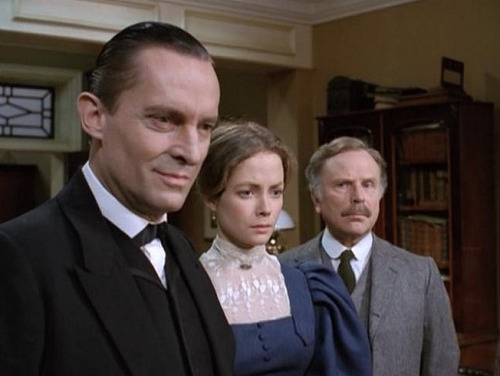
Included in this list of films as it is one of several feature-length TV Movies made as part of the popular hugely ITV series starring Jeremy Brett as Holmes. The series of Victorian set adaptation was developed for television by John Hawkesworth who also scripted this version of the Conan Doyle story of the same name
. It was directed by Peter Hammond, a frequent director for the series and stalwart of many iconic British TV series. Here Brett’s Holmes pairs up with Edward Hardwick’s bold and determined Watson (David Burke was in the role originally) to investigate the disappearance of a young woman’s father, becoming involved in a race to catch a missing convict and retrieve a lost treasure – a complex puzzle which in the words of Watson ‘grows darker rather than clearer’.
The quality of the series’ production still, more than 30 years after the first episode was broadcast, remains flawless and this feature length adventure is no expectation. The location shooting and interior shots are worthy of any cinematic release.
Here Brett is at his balletic best, scaling buildings and leaping from drain pipes in the search for clues in this compelling mystery which has just the right mix of tone, mystery, adventure and suspense.
Other feature length versions were made, The Hound of the Baskervilles (1988) is a solid effort and tempting inclusion for this list but is perhaps unremarkable when compared to others, likewise The Last Vampyre (1993) is noteworthy but ventures into slightly silly territory, breaking the controlled form which makes the Brett adventures hold firm.
The supporting cast here are also a treat, John Thaw, Jenny Seagrove and Ronald Lacey (forever most recognised as Major Arnold Toht in Raiders of the Lost Ark). However, the show is and always will be Brett’s, hampered by illness in later adventures, this is his Holmes at his most agile and, as many continue to furiously debate, the only true screen successor to Rathbone.
1. The Hound of the Baskervilles (1939)
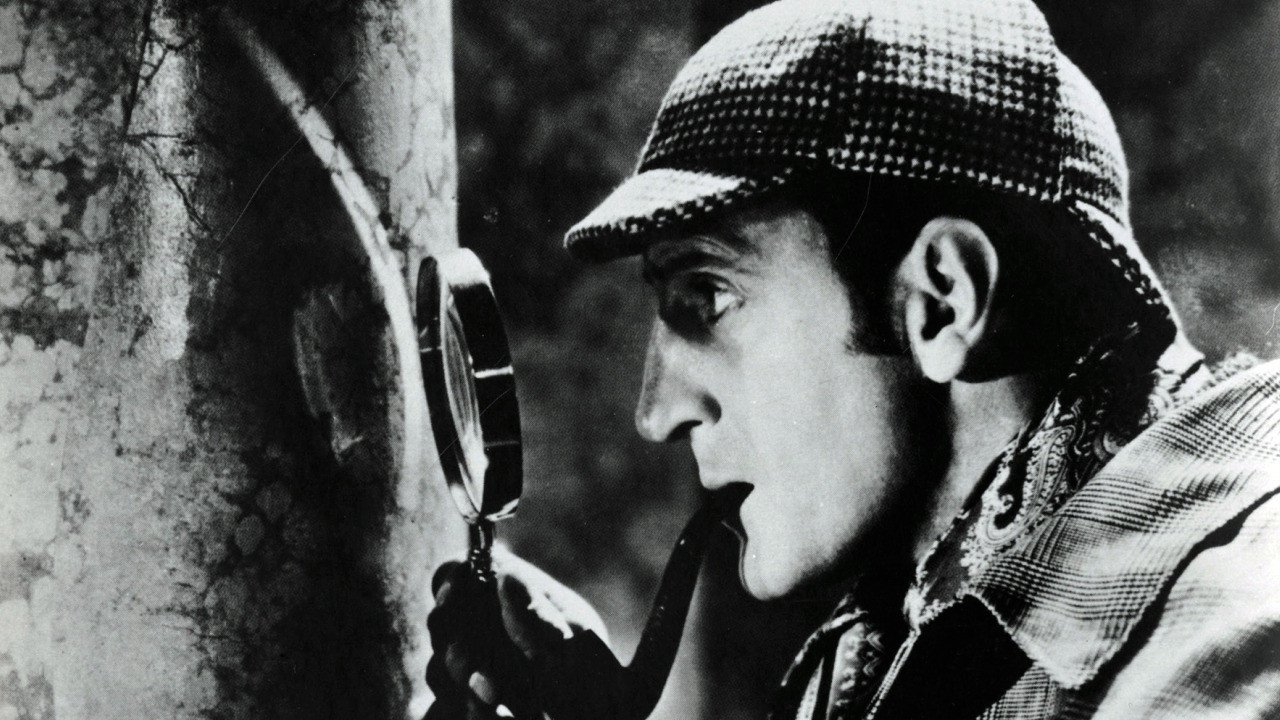
Basil Rathbone and Nigel Bruce’s first outing as Holmes and Watson is arguable their best. 20th Century Fox were a little unsure if the film would be a success and despite the series of Rathbone and Bruce adventures which were to follow, this outing was likely intended as a one off, with Richard Greene taking top billing as Henry Baskerville.
Director Sidney Landfield would later be better known for directing several films starring Bob Hope, but this would be the most profitable film of his career. The production also carries the distinction of being the first known filmic depiction of Holmes actually set in the Victorian period.
Here the mood and atmosphere are perfectly complimented in the stark sounds and black and white footage which add an extra sense of threat to the mist hovering over the moors. Unlike various other (usually TV adaptations) produced over the years the plot here is kept to a thrilling, well-paced and streamlined 80mins. However, it is casting which is core to the film’s place in this list (and the history of Holmes on screen).
Rathbone, in the role which came to define and later frustrate him, sets a mold by which all others would and still are frequently compared, aside from his measured performance his distinct profile adding to the popular image of Sherlock Holmes. Nigel Bruce, despite the portrayal of his character as plucky and keen to face the foe, possibly inadvertently, creates the archetypal ‘bumbling Watson’, a phrase that would be, and still is, frequently used in lazy journalism.
Hence, similarly Bruce also first sets a bar by which other screen Watson’s would be compared. This pairing would be quickly followed by the equally memorable Adventures of Sherlock Holmes (1939), again set in the Victorian era and produced by 20th Century Fox (based on a play by William Gillette).
Fox however would go on to lose the film rights to the Sherlock Holmes stories, the result of an apparent breakdown in negotiations with Conan Doyle’s estate and the outbreak of war putting doubt over the popularity of the ‘antiquated’ investigations of Victorian sleuths in a world of foreign agents and spies.
These rights were then quickly picked up by Universal Pictures who wasted no time in recasting Rathbone and Bruce in the lead roles for the studio’s stream of popular ‘updated’ then contemporary set adventures. In furthering the films Universal perhaps helped to crystallise a screen image of Holmes and Watson which exists to this day, but it was 20th Century Fox’s memorable Hound of the Baskervilles where it first occurred.
Author Bio: George Cromack is a tutor at the University of Hull and also Coventry University’s Scarborough Campuses; with a BA in Scriptwriting he also teaches evening classes in Creative Writing, Scriptwriting and Film Studies for the WEA. Working towards his PhD focusing on Folk Horror, he is a keen writer of both prose and script, Cold Calling, a film short written by George premiered in October 2013. Follow him on Twitter @MadBasil.